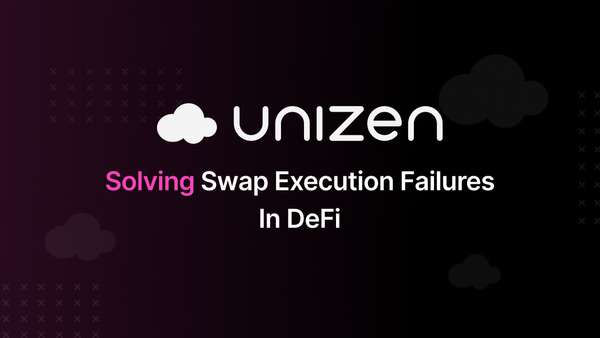DeFi Wallet Scams: How to Spot and Avoid Common Crypto Traps
Learn how to spot common DeFi wallet scams and secure your assets. Use this guide to understand how to operate safely, from phishing to rug pulls.

Decentralized finance (DeFi) has brought freedom to many in finance, this allows people to hold tokens and manage them without the conventional banks and facilitators. But with this autonomy comes a serious risk: DeFi wallet scams.
These scams built on the Decentralized Finance space are relatively unregulated. There is no reset password button or customer service that would help when one loses all their money to scammers. This is why one needs to know how things are done by fraudsters.
After reading this guide you will learn about basic DeFi wallet scams, understand how to recognize sophisticated scams, and learn how to avoid these schemes.
Importance of Wallet Security in DeFi
Liberty is the case when it comes to wallet security in the decentralized finance ecosystem. You store your funds in a wallet, which means only you have possession of the corresponding keys needed to move the funds. However, this degree of self-custody also means that any loss or theft of those keys corresponds to the loss of all amounts. There is no third party who can reclaim or reverse ill-suitable transactions. Therefore, if you become entangled with scammers who obtain your private keys, they are unequivocally free to exhaust your wallet balance with no way to get a refund. This is because DeFi operates in a decentralized and unregulated environment. Therefore, it is essential to know these various strategies of the scams.
Common Types of DeFi Wallet Scams
Here are the obvious types of scams most prevalent in DeFi space and the ways scammers employ to lure users:

1. Phishing Scams
Phishing is an Internet scam that has become common in DeFi. Some of them impersonate genuine DeFi sites or send email addresses almost identical to genuine ones as users share their private keys or seed phrases.
Methods
- Phishing Emails and Fake Websites: Cyber-criminals first cultivate trust, and start sending emails that look like they originate from other genuine platforms advising the user their accounts have gone through some activities that need correction using links provided. Like most other scams, these links lead the users to a fake website, which aims to trap user's login details.
- Malicious Links on Social Media: Social media platforms especially Twitter and Discord have been named as two areas where users are enticed to click on links that download the phishing software. The hackers usually create replicas of the most visited crypto accounts and post links to the fake related platform or service.
Protection Tip: Please do not insert your private keys or seed phrases online. Be sure to verify URLs carefully and be extra careful of unsolicited messages on social network accounts.
2. Rug Pulls
This is also another common DeFi scam where developers create a project, draw investors, and make away with their money through what is called Rug Pulls. Such scams are especially dangerous, as they allow the creating of new projects with high-return guarantees, which attract users' funds immediately.
Characteristics of Rug Pulls
Liquidity Pool Draining: These schemes often take place in decentralized exchanges or liquidity pools. Developers create liquidity and make people interested then the liquidity disappear leaving investors with assets that are of no worth.
Example: One of the popular Rug pull cases was the Squid-Game-Token, where the Creators attracted millions of dollars to invest and then took all the money from the Investors.
Protection Tip: While on each of these projects, do research on information concerning the team behind the developments, the members behind it, the project details, and the tokens.
3. Wallet Dusting
In a dusting attack, the scammers send small quantities of cryptocurrency known as 'dust' to the wallet. Dusting attacks attempt to reveal the identity of certain wallets effectively. This is to analyse the patterns of transactions, and also subsequent profiling of user accounts to be targeted for scams.
Protection Tip: Avoid communication with unfamiliar or unwanted tokens, particularly those with little justified worth. Some of the wallet settings can be set to allow dust to be ignored, keeping your transactions private.
4. Airdrop Scams
Some fraudsters will set up fake airdrops and to collect these tokens, one has to link their wallet. In reality, connecting a wallet to these scams grants scammers unauthorized access to users' funds.
Example: Most fake airdrops contain smart contracts that contain viruses or malware that will harm your device. After a user engages with a contract, the scammers can run a code and get control of the wallet.
Protection Tip: Do not invest in any unverified projects, and ensure that you check the permissions that any smart contract requests.
5. Fake Wallet Apps
Clone wallet apps impersonate genuine wallet apps with the intention of capturing the user's private key or seed phrase. They are frequently available from sanctioned marketplaces like Google Play or Apple App Store. Such loosened security systems allows scammers take advantage by creating fake apps with an embodiment of a wallet app with the hope of getting thousands of downloads before being reported.
Protection Tip: Download wallet apps directly from official DeFi platform websites, not by searching app stores.
6. Social Engineering Scams
The social engineering scams deceive users by building human trust. This type of scam is versatile, and could come in many different forms, which is why DeFi users are a popular target.
Types of Social Engineering Scams
- Impersonation Scams: Fraudsters may pose as popular personalities and business people, offering fake business deals that seem too good to be true.
- Romance Scams: Sometimes, criminals develop online relationships with their targets. Their main goal is to deceive them to transfer their cryptocurrency balance.
Protection Tip: You should be very careful whenever people come to you with investment offers that you didn't seek, especially through social media or through supposed romantic interests.
Advanced Defi Scams and How To Protect Your Assets Against Them
Excluding such basic schemes, some other complicated schemes target certain technical loopholes within DeFi protocols. These are relatively sophisticated DeFi wallet scams, and knowing them is vital to avoid losing your money.
1. Flash Loan Attacks
Flash loans provide the opportunity to receive a large amount without providing security within the transaction in which the loan is taken. These loans prove efficient for certain DeFi operations, but for the same reason, they have contributed to a distinctive class of scams.
Initial tactics have attackers borrow significant amounts of flash loans to manipulate tokens on the DEXs or engage with liquidity pools. Through a system, the attackers get to modify a token's value and then purchase tokens at a manipulated price.
Example: The bZx platform was recently hacked directly and lost almost $1M in a flash loan attack when attackers were able to borrow funds and push prices of several tokens in Uniswap, one of the most famous DEXs. The rate at which the attack was carried out and the number of computers involved made it very difficult to halt the attack.
Protection Tip: Before investing in DeFi platforms, try and research for platforms that have gone through a strict security audit. Security audits are regularly conducted by numerous platforms to locate possible threats which are incorporated into the practices of reliable platforms.
2. Malicious Smart Contracts
Smart contracts serve as the backbone of DeFi transactions. They allow the decentralization process without negotiators. There are situations where smart contracts are created with the negative goal to deceive users. Malicious contracts might resemble normal operations but contain code waiting to be activated by the user’s activities in order to drain their accounts.
Example: In some tokens, scammers are able to launch the mint function and create infinite tokens out of the blue. This hidden mint dilutes the token value hereby decreasing the market capitalization and prone to triggering a possible crash.
Protection Tip: Make sure that the contract has been audited by a well-known security company and renowned teams.
3. Man-in-the-Middle Attacks
MitM attack is where hackers position themselves in between two transferring parties. When an attacker gets data on random or via connection-sharing networks such as public Wi-Fi, they save other information such as private keys, passwords, seed phrases, among others. The moment a hacker gets this information, they can get into the user's wallet.
These attacks can be perpetrated on any open wireless network and pose a high risk to those transacting in wallets, or DEXs and other DeFi applications.
Protection Tip: Do not use the crypto wallet on any Public Wi-Fi, make use of a VPN for extra protection. VPN helps in encrypting your traffic and therefore it will be terrible for hackers to get your traffic.

Warning Signs of DeFi Wallet Scams
Understanding these red flags helps when dealing with DeFi and make you avoid getting bait from scammers.
1. Unrealistic Returns
Any claim to high or guaranteed returns should be perceived as a typical signal of scam. Given the inherent volatility of DeFi, no project can guarantee returns without risk. Those promises are usually made by the scammers to get people to invest fast, as people love the idea of getting money faster.
Protection Tip: It is always important to check the authenticity of any project by trying to find its team, tokens distribution and community.
2. Excessive Marketing and Celebrity Endorsements
Appealing marketing or endorsements, whether genuine or counterfeit, are to make users trust a site. Scammers might open fake accounts, advertisements, and even false testimonials.
Protection Tip: Avoid signing up for a project you come across with ads or influencers on social media. To clarify this issue it is possible to consult official channels.
3. Unnamed Team Members and Lack of Transparency
Real projects reveal information regarding the project's leadership, advisory services and development plan.
Protection Tip: Nothing is as deadly as a project that has no discernible transparency, so be careful of such projects. Social network platforms such as Twitter, LinkedIn or Medium may provide references to other sources containing ideas on the team, collaboration with community engagement.
How To Protect Yourself from DeFi Wallet Scams
Being prudent and ensuring to protect your assets is the way to go in the DeFi world. Here are methods that can help to save your wallet and all your funds:
1. Use Hardware Wallets
A hardware wallet also known as cold storage stores your private keys off-line to minimize connected risks. Unlike hot wallets that can be accessed on the internet, hardware wallets provide better security since they contain the private key on a physical gadget. Traditional hardware wallets are responsible for creating and storing private keys offline. This means that while your computer or a mobile device is being compromised your private key is safe. Currently, people use the Ledger and Trezor wallets, both of which are suitable for numerous types of Cryptocurrencies and DeFi services.
Protection Tip: Hardware walllets also help to reduce the chances of hackers getting hold of user’s private key, since they are not connected to the net.
2. Enable Two-Factor Authentication (2FA)
Two-factor authentication makes your wallet stronger by adding an initial password and a second code sent to your mobile phone. However, when someone has obtained your login details he cannot log in unless he has the code for the 2FA. As a security measure, 2FA is widely incorporated in many DeFi platforms and wallet suppliers.
Protection Tip: Allow 2FA on all the links that give this possibility, and enable it, if it is connected to your DeFi wallet. This basic measure can help to reduce the probability of gaining unauthorized access.
3. Verify Websites and Apps
Since there are increasingly common cases of phishing and imitation applications, checking the identity of sites and applications is necessary. Never get your wallet app from third-party sharing sites, always download via the official project site. Be sure to verify a URL, as it may have been slightly changed by scammers. Never click on links from unknown senders or open strange emails containing pictures.
4. Avoid Sharing Private Keys or Seed Phrases
Private keys and seed phrases form the backbone of wallet security. Disclosure of any of them poses threats to the overall security of the assets you own. Scammers pretending to be from the customer service desk usually follow these private details. In contrast to passwords, keys, and mnemonics grant full access to the wallet and cannot be altered after being compromised.
Protection Tip: It is unwise to give out a personal key or a seed phrase to anyone even if they claim to be a support ambassador.
5. Research Projects Thoroughly
DeFi, just like every other form of investment, requires good research especially when you are engaging with a new project. Good projects give feedback about the team, timeline, and security concerning the project. Here are things to look out for:
- Ensure to check for a quality whitepaper that states the project's purpose, tokens distribution, and the security measures in the system.
- Search for people participating in groups or channels like Twitter, Discord, or Telegram. Good interaction and continuous communication with the public always give a firm element of legitimacy.
Protection Tip: It is always advisable to spend time creating background, partnerships, and a trustworthy reputation. Check on any project before dedicating funds.
Conclusion
The emergence of DeFi has seriously opened up many opportunities for financial liberation and experimentation. Nonetheless, due to the decentralized and uncontrolled nature of DeFi, the platform remains a perfect place for scammers to take advantage of new participants. While each new day brings new sophisticated tricks of scammers, it is crucial to familiarize oneself with the varieties of DeFi wallet scams and the possible signals to protect the investments. But even simple wire transfer schemes such as fake wallets or phishing emails are now disguised to deceive users. This often happens through fake media assets and fake social profiles.
One of the biggest tactics that scammers use is the user's unfamiliarity with the DeFi ecosystem, so simply reading about these scams may be one of the best things you can do to protect yourself. The only way to protect yourself in the world of DeFi which is rapidly changing is to be informed. Your safety always comes first, so be careful, gather the information, and adhere to the guidelines in this guide. With this exposure, you will benefit from DeFi while safeguarding your investment.



